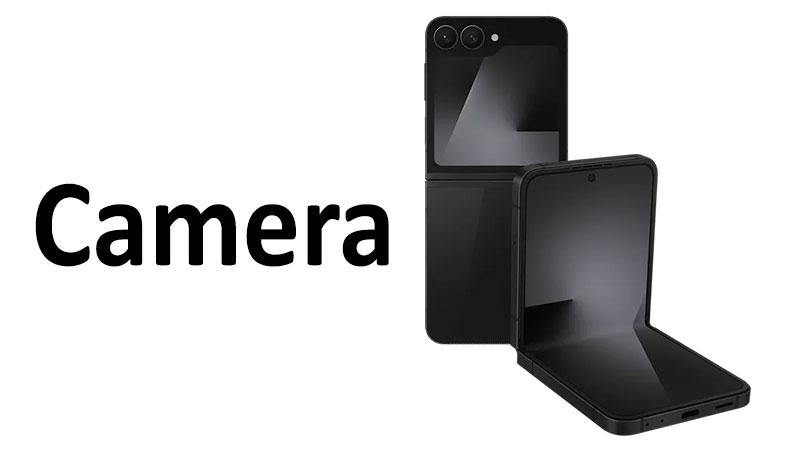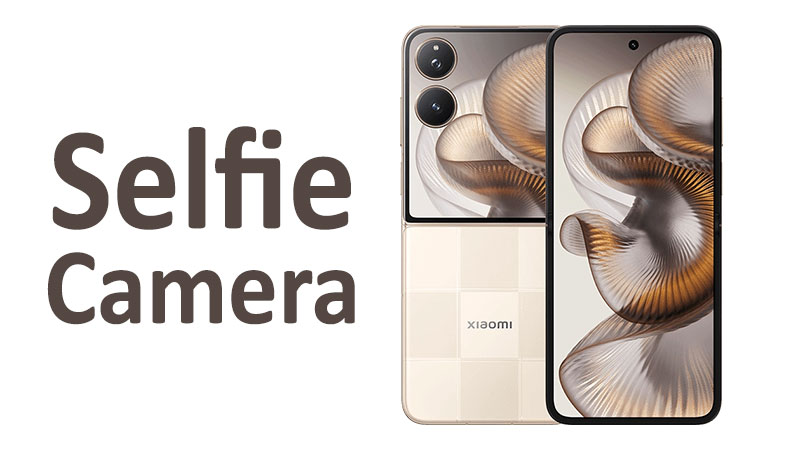The Samsung Galaxy Z Flip 7 represents the latest evolution in the foldable smartphone market. While its flexible display and compact design are the headline features, the camera system is a crucial component that determines its true value. For many users, a phone’s camera is its most important feature. The Z Flip 7’s cameras are a blend of familiar hardware and new software, promising to deliver a high-quality photography experience. This article will provide a comprehensive and detailed analysis of the Samsung Galaxy Z Flip 7 camera, covering its specifications, real-world performance, and unique features that leverage its foldable form factor.
A Closer Look at the Camera Hardware
The Galaxy Z Flip 7 comes equipped with a dual-camera system on its exterior and a single selfie camera on the inside. This setup is designed to be versatile, offering a range of shooting options.
Main Camera: The Heart of the System
The primary camera on the Z Flip 7 is a 50 MP wide-angle lens with an impressive f/1.8 aperture. This sensor is the same one found on its predecessor, the Galaxy Z Flip 6. It features a 23mm focal length, a 1/1.57″ sensor size, and 1.0µm pixels. The camera also includes Dual Pixel PDAF (Phase Detection Autofocus) for fast and accurate focusing, as well as OIS (Optical Image Stabilization) to reduce blur from camera shake.
Ultrawide Camera: Capturing the Full Picture
Accompanying the main sensor is a 12 MP ultrawide camera. With an f/2.2 aperture and a 13mm focal length, it offers a sweeping 123˚ field of view. This is ideal for landscapes, group photos, and creative shots that require a wider perspective. The sensor size is 1/3.2″ with 1.12µm pixels, providing a solid foundation for detailed ultrawide shots.
Selfie Camera: A Front-Facing Performer
For traditional selfies, the Z Flip 7 includes a 10 MP wide-angle camera on the inner, foldable screen. This lens has an f/2.2 aperture, a 23mm focal length, and a 1/3.0″ sensor with 1.22µm pixels. While the hardware is competent, its primary value is in the convenience it offers for video calls and quick self-portraits when the phone is unfolded.
Performance & Features: Beyond the Specs
While the hardware remains consistent with the previous generation, the Samsung Galaxy Z Flip 7’s camera performance is significantly enhanced by software and the unique foldable design. The move to the Exynos 2500 processor has allowed Samsung to refine its computational photography.
Image Processing and Quality
Samsung has fine-tuned its image processing on the Z Flip 7. Photos from the main camera exhibit more vibrant colors and enhanced contrast compared to the Galaxy Z Flip 6. While this can sometimes lead to an over-saturated look, it often results in more eye-catching and visually pleasing images, especially in good lighting. However, some users might find the processing less true to life.
The ultrawide camera performs well in favorable conditions, capturing decent landscapes and group shots. However, similar to many ultrawide lenses, it can struggle in low-light situations. The selfie camera on the inner screen produces clear and detailed photos, but it’s often overshadowed by the ability to use the much superior main camera for selfies.
The Magic of the Cover Screen
The larger, 4.1-inch cover screen, now known as the Flex Window, is a game-changer for the camera experience. Users can now use the main 50 MP and ultrawide 12 MP cameras for selfies and video calls, with the Flex Window acting as a high-quality viewfinder. This is a massive upgrade over using a less capable front-facing camera. You can simply double-press the power button to launch the camera and use hand gestures to trigger a countdown timer for a hands-free selfie.
Flex Mode: A Built-in Tripod
Flex Mode is another feature that sets the Z Flip 7 apart. By folding the phone at a 90-degree angle, it becomes a self-supporting tripod. This allows for hands-free selfies, stable low-light shots, and creative long-exposure photography without needing any extra accessories. It’s also perfect for video calls, where the phone can be propped up on a table. The camera interface automatically adapts to Flex Mode, splitting the viewfinder and controls between the two halves of the screen.
Video Capabilities
The Z Flip 7’s video recording capabilities are also strong. All three cameras (the 50 MP main, 12 MP ultrawide, and 10 MP selfie) can record video at up to 4K at 60fps. This is a significant feature, especially for a foldable phone. The main and ultrawide cameras also offer additional frame rate options, including 1080p at up to 240fps and 720p at a super-slow 960fps. The inclusion of HDR10+ further enhances video quality by providing a wider range of colors and better contrast.
AI-Powered Features
The Galaxy Z Flip 7 leverages Galaxy AI and its ProVisual Engine to improve the photography experience. Features like Photo Assist enable users to easily edit photos, remove unwanted objects, and enhance images with generative AI. The AI can also improve low-light shots with better noise reduction and color accuracy, though some reviews suggest low-light performance can be inconsistent.
Comparisons: Z Flip 7 vs. Z Flip 6 and Competitors
Z Flip 7 vs. Z Flip 6
As noted, the camera hardware on the Z Flip 7 is identical to the Z Flip 6. This includes the main 50 MP sensor, the 12 MP ultrawide, and the 10 MP selfie camera. The main difference lies in the software and the new Exynos 2500 processor. The Z Flip 7’s images generally have more saturation and contrast, which is a matter of personal preference. The improved camera performance is primarily due to software optimizations rather than a hardware upgrade.
Z Flip 7 vs. Motorola Razr Ultra
The Motorola Razr Ultra is a direct competitor to the Z Flip 7. While both phones feature a 50 MP main camera, the Razr Ultra has a more capable 50 MP ultrawide camera, which also doubles as a macro lens. The Z Flip 7’s ultrawide is only 12 MP. The Razr Ultra also has a more impressive 50 MP selfie camera. However, the Z Flip 7’s video capabilities, particularly its ability to record 4K at 60fps with all three cameras, gives it an edge in video.
Pros and Cons of the Samsung Galaxy Z Flip 7 Camera
Pros:
- Versatile Main Camera: The 50 MP sensor with OIS and PDAF is a strong performer in most lighting conditions, capturing sharp, detailed photos.
- Unique Form Factor: Flex Mode turns the phone into its own tripod, enabling creative, hands-free shots.
- Dual Preview: The larger Flex Window allows subjects to see themselves, making it easier to compose the perfect shot.
- High-Quality Video: 4K video recording at 60fps on all three cameras, with additional slow-motion and HDR10+ support, is excellent for a foldable.
- Advanced AI Features: Galaxy AI offers powerful post-processing and editing tools.
Cons:
- Iterative Hardware: The camera hardware is unchanged from the Z Flip 6, which might disappoint those expecting a major upgrade.
- No Telephoto Lens: The lack of a dedicated telephoto lens limits optical zoom capabilities, relying instead on digital zoom.
- Inconsistent Low-Light Performance: While improved by software, low-light photography can still be hit or miss, especially with the ultrawide camera.
- Potential Over-Saturation: The new image processing can sometimes produce overly saturated colors that don’t reflect real-world scenes accurately.
Conclusion
The Samsung Galaxy Z Flip 7’s camera system is a powerful and versatile tool that leverages its unique foldable design to provide a superior user experience. While the core hardware remains the same as its predecessor, the software optimizations and the expanded functionality of the Flex Window make it a more refined and capable camera phone.
For prospective buyers, the Z Flip 7’s camera offers a solid, flagship-level performance. It excels in well-lit conditions, and its video capabilities are impressive. The true value, however, lies in its innovative features like Flex Mode and the ability to use the main cameras for high-quality selfies via the cover screen. If you’re upgrading from an older Flip model or are new to the foldable world, the Z Flip 7 provides a significant leap forward in camera usability and performance. It may not match the more expensive, professional-grade camera phones like the Galaxy S25 Ultra, but it delivers an excellent and fun photography experience in a compact, stylish package.
FAQ
Does the Samsung Galaxy Z Flip 7 have a telephoto lens?
No, the Galaxy Z Flip 7 does not have a dedicated telephoto lens. It uses a 50 MP main sensor that can perform a 2x crop to achieve a passable digital zoom.
What is Flex Mode and how does it help with the camera?
Flex Mode allows the phone to be propped open at various angles, turning it into a built-in tripod. This is great for hands-free selfies, stable low-light shots, and creative long-exposure photography.
Is the camera on the Z Flip 7 better than the Z Flip 6?
While the camera hardware is the same, the Z Flip 7’s camera offers improvements in software processing, resulting in better contrast and color saturation. The larger cover screen also significantly enhances the selfie experience.
Can I take selfies with the main camera on the Z Flip 7?
Yes, you can. The larger Flex Window on the Z Flip 7 acts as a viewfinder, allowing you to use the high-quality 50 MP main and 12 MP ultrawide cameras for selfies.
What are the video specifications of the Z Flip 7 camera?
The Galaxy Z Flip 7’s main, ultrawide, and selfie cameras can all record in 4K at 30/60fps. It also supports slow-motion video at 1080p@60/120/240fps and 720p@960fps, and features HDR10+ video recording.



